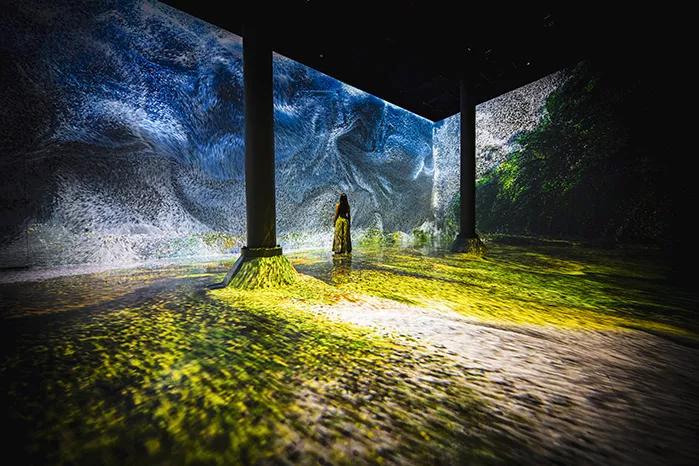Beeple (b. 1981), EVERYDAYS: THE FIRST 5000 DAYS, 2021.
Art museums tend to be more conservative institutions. And for a long time, digital art was not considered as ‘real art’. However, earlier this year, Christie’s, the renowned auction house (not the other projector manufacturer), auctioned off its first digital-only artwork by an artist named Beeple, for nearly 70 million dollars. Many agree that this unique sale introduced the next chapter in art history with a new appreciation for digital arts.
The notion of art has evolved greatly throughout the centuries. Something new is always a bit more complex to grasp. And doubts are understandable. But if modern museums really wish to be a representative of the art of their time, then digital art is a trend they can’t ignore any longer.
Or as Glenn Lowry, director of the MoMA in New York, summarizes: “In the past, we resisted some of the directions contemporary art was moving. We missed Warhol in the ‘60s. We avoided collecting the art stars of the ‘80s. But we came to realize that we had been foolish, so we played catch-up. And what I don't want to do is play catch-up here.”
Conclusion
Because of its stigma, many museums were long hesitant about the curation of digital arts. But after a period of denial and deferral, art museums have now finally entered the digital art fray. Should museums really be involved with experimentation, novelties and cutting-edge art? We say “yes”!
Looking for innovative ways to display your digital art exhibits, check the Barco visualization portfolio for some inspiration.

 Multimedia artist Refik Anadol, for instance, was one of the firsts to explore the potential of synergies between art and machine learning. "As an artist and a researcher, I'm really inspired about how we can make the invisible more visible," Anadol says. “Translating data to reinterpret and narrate a world that we cannot see or touch.”
Multimedia artist Refik Anadol, for instance, was one of the firsts to explore the potential of synergies between art and machine learning. "As an artist and a researcher, I'm really inspired about how we can make the invisible more visible," Anadol says. “Translating data to reinterpret and narrate a world that we cannot see or touch.”